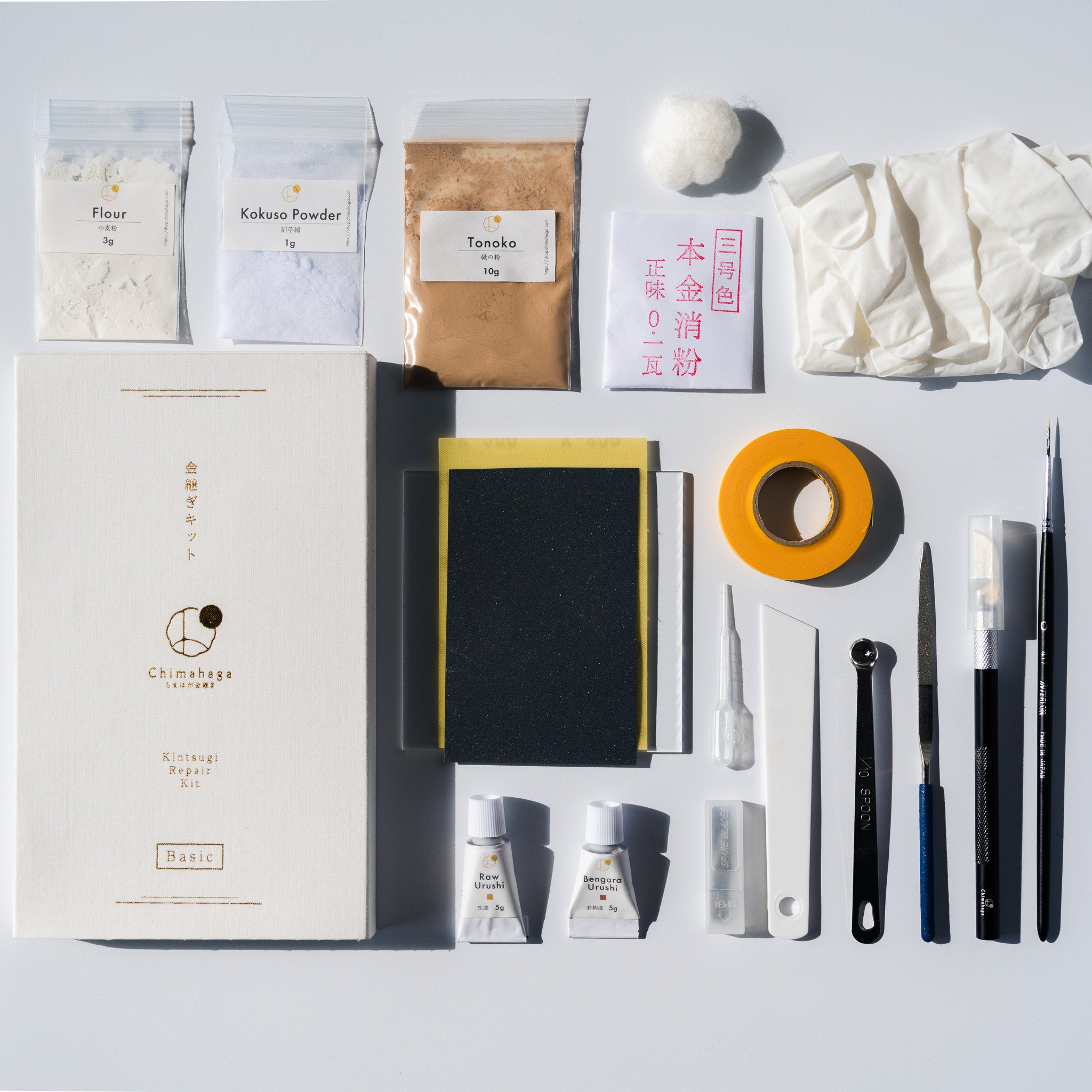Why Use Ethanol for Kintsugi?
In traditional kintsugi, urushi lacquer is essential at every stage of the process.
One challenge with urushi is that it doesn’t wash off with water or soap. Any leftover lacquer on tools or the work surface must be wiped away using an organic solvent.
Among the various solvents available, ethanol is one of the safest and easiest to use. I rely on ethanol both when repairing ceramics myself and when teaching kintsugi in my workshops.
Incidentally, the alcohol widely used for disinfection during the COVID-19 pandemic was also ethanol.
Other Solvents Can Be Used
Although ethanol is my preferred choice, it’s not the only option for cleaning urushi. Other commonly used organic solvents include:
- Turpentine
- Camphor oil
- Kerosene
- Methanol
- IPA (Isopropyl Alcohol)
However, many of these solvents are more toxic than ethanol. If used without proper ventilation, they can cause headaches or other health issues.
In the lacquerware industry, turpentine is actually more common than ethanol. However, I personally experience headaches when using turpentine, even with good ventilation. Because of this, I have relied exclusively on ethanol for years. (Of course, sensitivity to different solvents varies by individual.)
A particularly dangerous option is methanol. Although it sounds similar to ethanol, it is highly toxic. Improper handling can even lead to blindness, so unless absolutely necessary, I strongly advise against using it.
How to Choose the Right Ethanol
If you search for ethanol online, you’ll find many different products. Here are the key factors to consider when selecting one for kintsugi.
1. Choose High-Purity Ethanol
Ethanol is available in different concentrations:
| Type | Alcohol Content |
|---|---|
| Anhydrous (Absolute) Ethanol | 99.5% |
| Regular Ethanol | 95.1–96.9% |
| Disinfectant Ethanol | 76.9–81.4% |
Disinfectant ethanol, which is commonly sold in drugstores, can be used for cleaning urushi. However, due to its higher water content, it tends to leave moisture behind, making it less effective for wiping off lacquer.
For the best cleaning results, anhydrous ethanol (99.5%) is recommended. Although it can be harder to find, it provides the most efficient cleaning.
2. Check for Additives
Not all ethanol products are pure. Some contain IPA (isopropanol) or other additives.
Since ethanol is the same type of alcohol found in beverages, pure ethanol is taxed as an alcoholic beverage in many countries. To avoid this, manufacturers often add small amounts of other chemicals to make it undrinkable. These products are labeled as "IPA ethanol" or "denatured ethanol."
However, some denatured ethanol contains methanol, which is extremely toxic.
For kintsugi, the safest choices are:
- Pure anhydrous ethanol
- Anhydrous ethanol with a small amount (about 10%) of IPA
If a product contains methanol, avoid it.
Recommended Ethanol Products
Here are some ethanol products that are easy to find in different countries:
Japan
- Kenei Pharmaceutical Anhydrous Ethanol (widely available and easy to purchase)
United States
- Denatured Anhydrous Ethanol (a good option for kintsugi)
United Kingdom
- High-Purity Denatured Ethanol (anhydrous ethanol is harder to find in the UK, but this option has a relatively high purity)
I hope this helps! Having the right cleaning supplies makes kintsugi work much easier.

Leave a comment
This site is protected by hCaptcha and the hCaptcha Privacy Policy and Terms of Service apply.